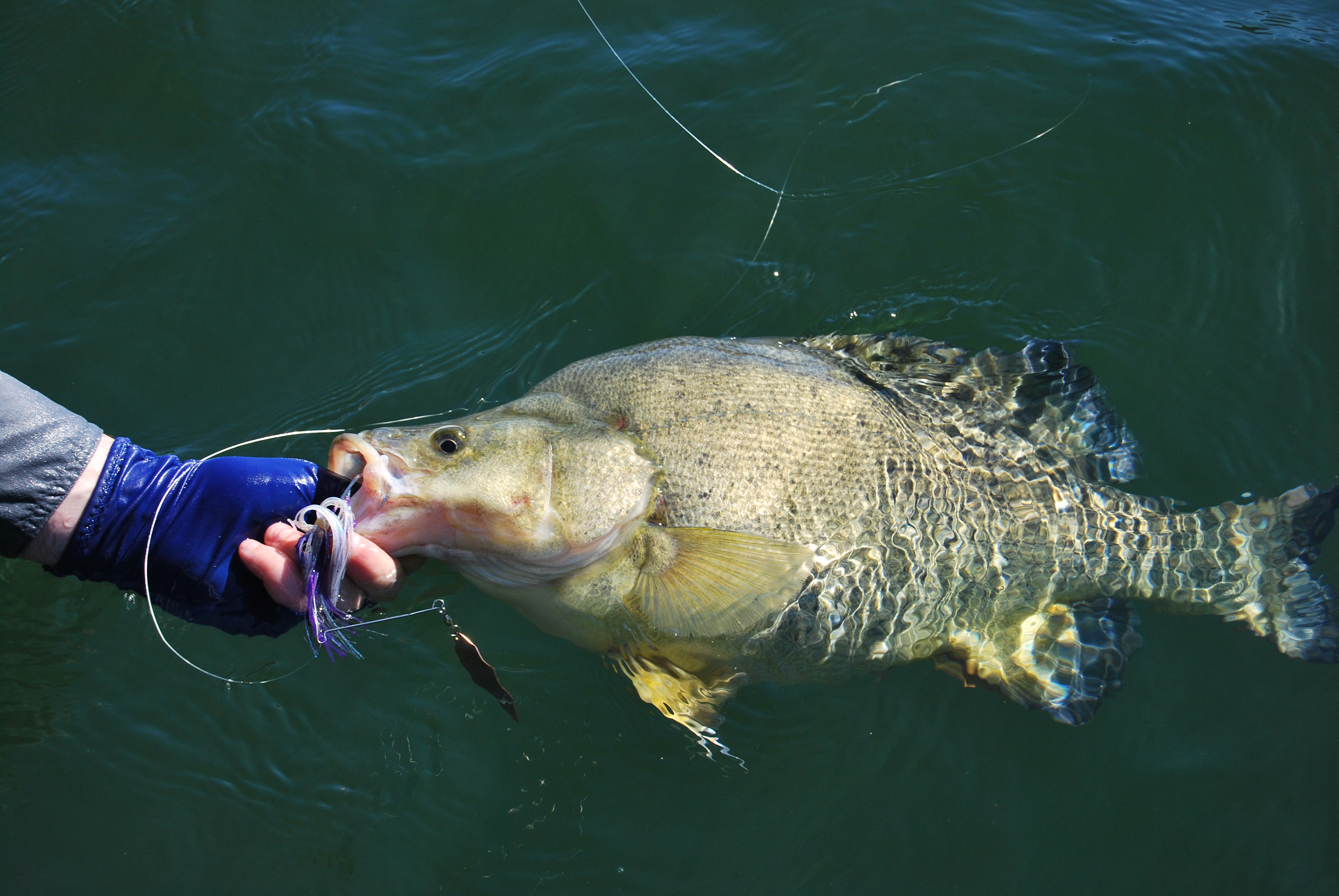How to catch golden perch
Golden perch can turn up when fishing for other species, however they are more likely encountered when targeted with specific techniques, in certain locations and with smaller sized lures. Golden perch, or ‘yellas’ as they’re fondly known, respond well to baits and lures. If one technique or location isn’t working, it pays to mix things up and try something different. Their preferred habitat in Lake Eildon can vary but they’ll usually be found near structure like submerged logs, along rock walls or in amongst standing timber, large or spindly. In spring, yellas often school closer to shore. At other times, they tend to hold among trees anywhere from the bottom in say 15 metres all the way up to within a few metres of the surface. Having a good sounder and knowing how to use it is a big advantage. Redfin and trout are a bycatch because techniques and lure choice overlap. Sometimes, big Murray cod turn up too!
 Trolling
Trolling
Golden perch often congregate and a big part of catching a few is finding them in the first instance. Success can be had in Eildon by trolling small, bibbed crankbait lures, lipless crankbaits and even soft plastics or small spinnerbaits at depths between 6 and 12 metres. Anything is worth a try, provided it can move slowly near the bottom and isn’t too large. Try different lures to see what the fish respond to as it can change day to day. Trolling along open banks is best or where there is large dead timber standing vertically in the water. The downside to trolling is getting hung up or snagged. A balance must be struck between trolling a good area and not getting snagged constantly! Once you find golden perch this way, turn around and troll over the area again for another shot at a likely school.
Boat-based lure casting
On cast lures goldens are great fun because they’ll vigorously strike lures when in the mood. From a boat they can targeted by slowly moving along the shoreline casting towards the bank with the same lures used for trolling. Casts are fanned towards the bank with the lure worked or hopped back to the boat. Another effective approach is taking up a stationary position above yellas that are holding in trees and dropping a lure down vertically to them. Move every 20 minutes or use a sounder to find the schools in the first place. Small black grub tail soft plastics are deadly in these circumstances. Just move your lure slowly from the bottom to the surface right next to the main trunk of a standing tree. Welcome to world of ‘black grubbing’.
 Bait fishing
Bait fishing
Bait fishers do well using a variety of natural baits including scrub worms, small yabbies, freshwater shrimp even estuarine bass yabbies. With bait fishing, it pays to use rigs that keep the bait anchored in the same position to avoid getting snagged too much. A running sinker or paternoster rig work well with a size #1 hook. Move often if you don’t get a bite and fish the same areas as the lure casters.
Shore-based
Active fishers will love to walk or wade their way around Lake Eildon with a spin rod and employ a strategy of cast and move. By firing a series of fanned out casts into the water and then moving 20 metres to repeat the process you’ll cover a stretch of shoreline effectively and improve your chances of intersecting golden perch. This prospecting style of fishing utilises the same lures you’d troll with, favouring models that can be cast a long way into deep water. Sinking lures can be bounced off the bottom as they’re retrieved back to shore. Strikes often happen halfway back or even at your feet in front of your eyes! Longer rods will help cast further and cover more water. A 7 to 7.5-foot medium actioned rod with a 2500 sized reel, 3kg braided line and 3 or 4kg leader of about 6 foot are perfect. Bait fishers can use similar gear, just add in a good rod holder to anchor things down. Golden perch can be caught right through the day, but tend to be more active early at day break and dusk.
